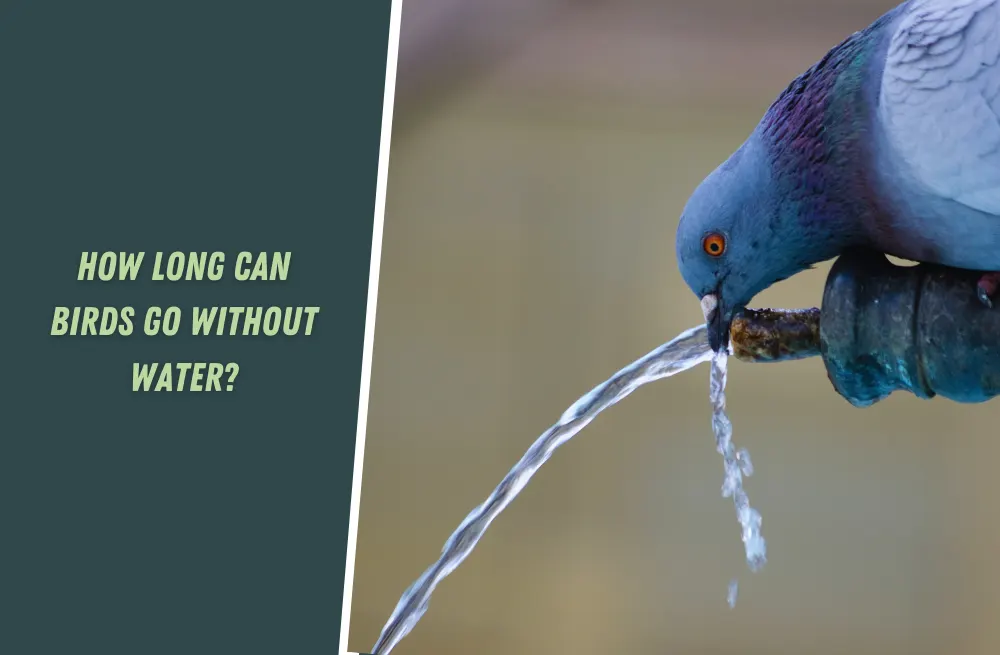Kangaroos are fascinating creatures, and many people wonder if they can be friendly towards humans. While it’s true that kangaroos have been known to interact with humans in certain situations, it’s important to approach them with caution and respect.
In general, kangaroos are wild animals and their behavior can be unpredictable. While some kangaroos may display curious or seemingly friendly behavior, it’s crucial to remember that they are still wild animals with natural instincts and boundaries.
If you come across a kangaroo in the wild, it’s best to observe them from a safe distance. Avoid approaching or attempting to touch them, as this can be perceived as a threat and may lead to defensive or aggressive behavior.
In some cases, kangaroos in wildlife parks or areas where they are accustomed to human presence may be more comfortable around people. However, it’s still important to follow any guidelines provided by the park or wildlife authorities to ensure both your safety and the well-being of the kangaroos.
Do Kangaroos Like Humans?
Kangaroos are wild animals, and their attitude towards humans can vary. While some kangaroos may become accustomed to human presence in certain environments, it doesn’t necessarily mean they have an inherent liking for humans.
Kangaroos are naturally curious, and some individuals may approach humans out of curiosity. However, it’s important to remember that they are still wild animals with instinctual behaviors.
Approaching them can be risky, as they may perceive it as a threat and react defensively. It’s best to maintain a safe distance, respect their space, and appreciate them from afar to ensure their well-being and your own safety.
Are Kangaroos Friendly With Each Other?
Kangaroos have complex social behaviors and interactions within their own species. Generally, kangaroos exhibit a social structure that revolves around dominance and hierarchy. Within a group, called a mob, there is typically a dominant male, known as the alpha or dominant buck, who maintains control over access to resources and mates. Other males may engage in sparring or fighting to establish dominance.
Female kangaroos, known as does, also have a social hierarchy based on age and size, with older and larger females typically holding higher positions. They form close bonds with their joeys (young kangaroos) and engage in communal care, such as alloparenting, where multiple females share the responsibility of raising and protecting the young.
Understanding Kangaroo Social Structure and Communication
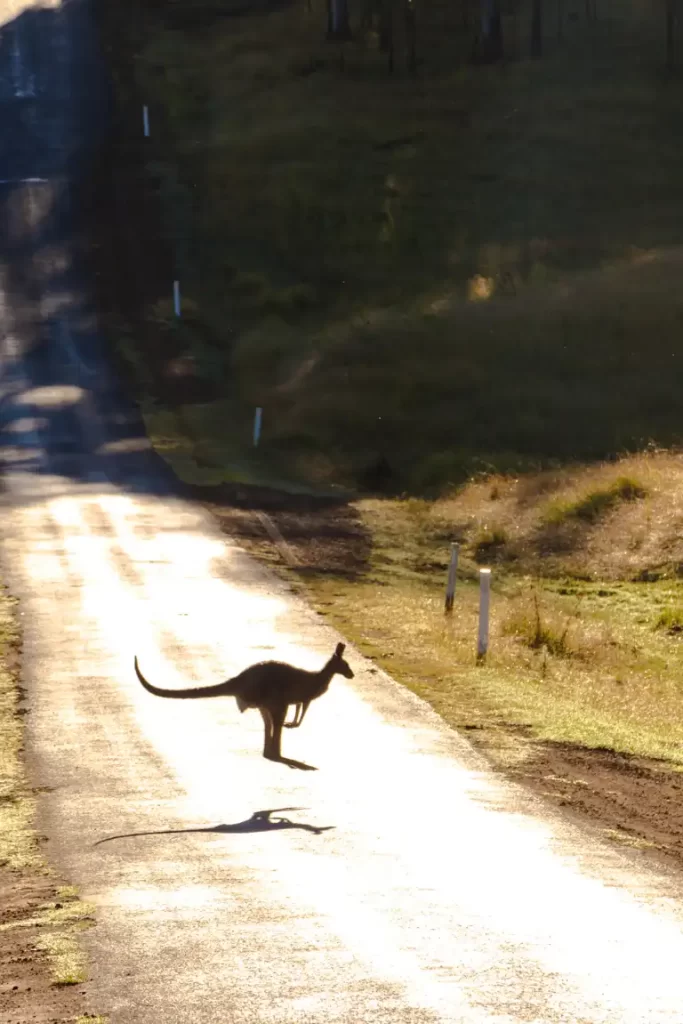
Kangaroos are fascinating animals that have been captivating people’s attention for years. One of the most common questions people ask is, “Are kangaroos dangerous?” While this question is important, it’s equally important to understand their social structure and communication.
Eastern Grey Kangaroo
The eastern grey kangaroo is one of the largest marsupials in the world and can be found in eastern Australia. They live in groups called mobs, which can range from a few individuals to over a hundred. These groups consist of females, their young (called joeys), and males.
Hierarchy
Within a mob, there is a hierarchy based on size and strength. The larger and stronger males are at the top of the hierarchy, while smaller males are at the bottom. Females are also ranked based on their size and strength but have more flexibility than males.
The hierarchy determines access to resources such as food, water, and mates. The dominant male has priority access to these resources while lower-ranking males must wait their turn.
Communication
Kangaroos communicate with each other through body language and vocalizations. For example, they use ear movements to signal aggression or submission. If a kangaroo wants to show dominance over another kangaroo, it will stand tall on its hind legs while using its tail for balance.
Kangaroos also use vocalizations such as grunts, coughs, hisses, and clicks to communicate with each other. These sounds vary depending on the situation; for example, a mother kangaroo may make clicking sounds when communicating with her joey.
The Truth About Kangaroo Fighting Behavior
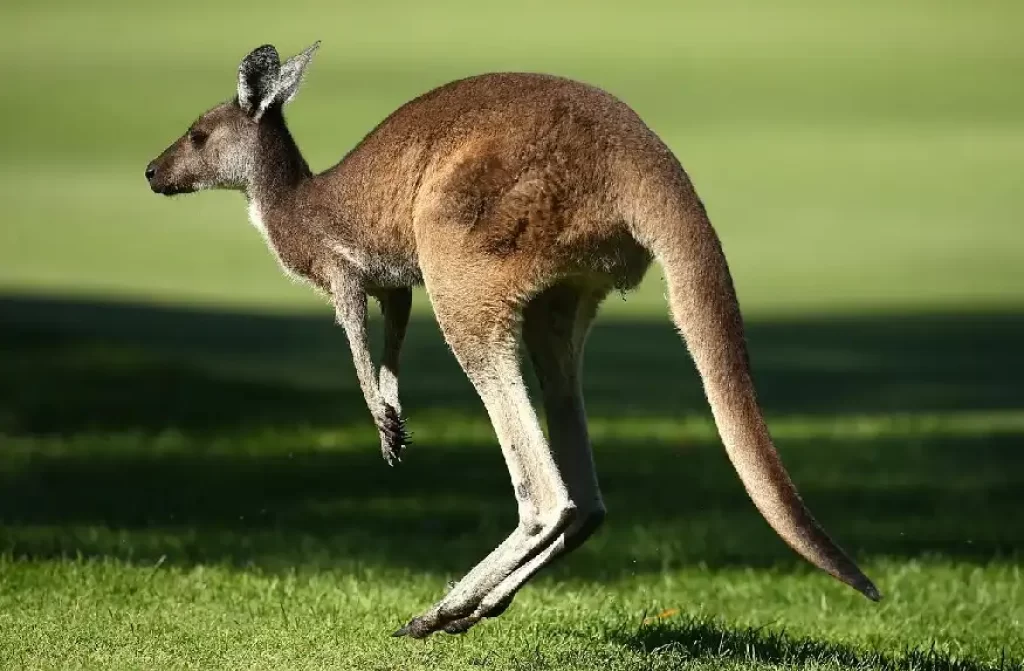
Male kangaroos are known for their aggressive fighting behavior, particularly during mating season when they fight for dominance and mating rights. The Western grey kangaroo is one of the most notorious species for its combative nature.
How do kangaroos fight?
Kangaroos use a combination of boxing and kicking with their powerful hind legs to engage in combat. During fights, male kangaroos will stand on their hind legs and box each other with their front paws while using their tails to balance themselves. They may also kick each other with their hind legs, which can be extremely dangerous due to the strength of their leg muscles.
Why are kangaroos so muscular?
Kangaroos have evolved to be incredibly muscular as a result of the need to hop long distances across grassy plains. Their powerful legs enable them to travel quickly and efficiently over rough terrain, making them formidable predators in the wild.
What are kangaroos like?
Kangaroos are social animals that live in groups known as troops or mobs. These groups can range from just a few individuals up to several dozen depending on the species and location. Kangaroos are herbivores that primarily feed on grasses, but they may also eat leaves, flowers, and bark when food is scarce.
What are kangaroos known for?
Aside from their fighting behavior, kangaroos are best known for their distinctive hopping gait. They use this method of movement to cover large distances quickly while conserving energy. Kangaroos can also jump up to three times their own body length in a single bound!
What are kangaroo prey?
While adult kangaroos have few natural predators due to their size and strength, young joeys are vulnerable to attacks by dingoes and other predators. Habitat loss due to human activity has put many populations at risk.
What are kangaroo diets?
As herbivores, kangaroos feed primarily on grasses and other plant materials. They have specialized teeth that allow them to grind up tough vegetation, and they may also regurgitate food to chew it more thoroughly before swallowing.
Do Kangaroos Box or Punch?
Yes, kangaroos are known for their boxing behavior. When engaging in fights or disputes, male kangaroos, called bucks, will often stand on their hind legs and use their muscular arms to strike their opponents with their powerful punches. This behavior is a form of territorial defense and competition for mates. While it may look impressive, it is primarily a display of dominance rather than an aggressive act.
Do Kangaroos Have Any Predators?
Yes, kangaroos have natural predators in the wild. The main predators of kangaroos include dingoes, which are wild dogs found in Australia, as well as large predators like crocodiles and large birds of prey. Additionally, kangaroo joeys (baby kangaroos) are vulnerable to predation by foxes, feral cats, and eagles. However, adult kangaroos are generally swift and agile, and they can defend themselves by using their powerful hind legs to kick potential threats.
Kangaroo Attacks on Humans
While kangaroo attacks on humans are rare, they can be quite serious when they do occur. Kangaroos have been known to inflict serious flesh wounds with their sharp claws and powerful legs, particularly if they feel threatened or cornered.
The Power of a Kangaroo Kick: Understanding Their Strength
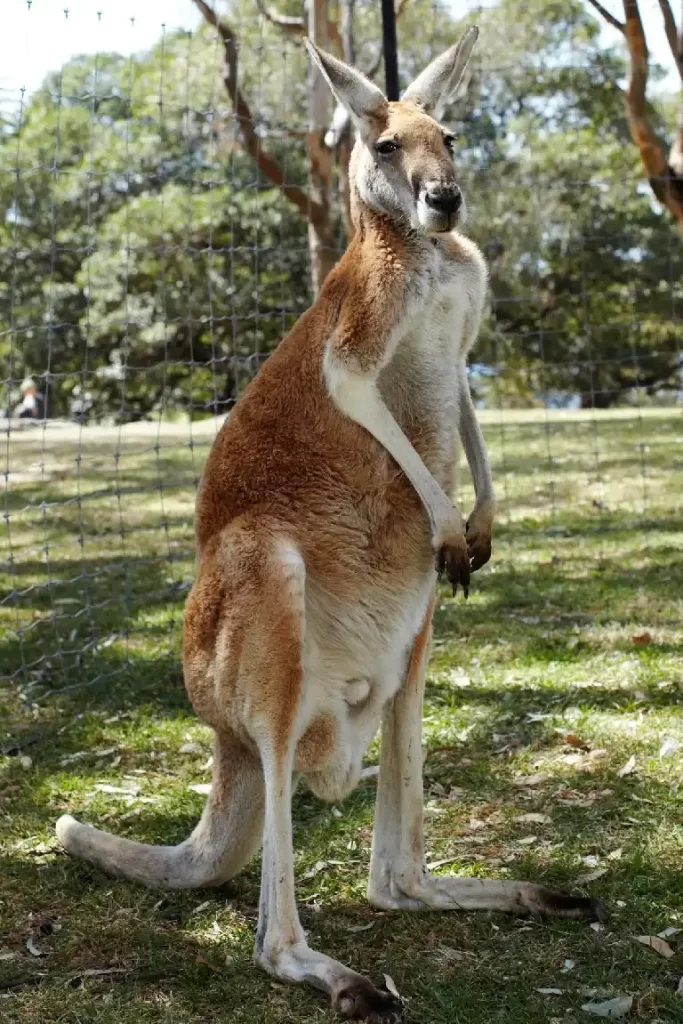
Kangaroos are fascinating creatures known for their unique physical characteristics, including their powerful hind legs that can deliver a devastating kick. In this article, we will explore the strength and impact of a kangaroo’s kick, as well as the factors that contribute to its power.
What Makes a Kangaroo’s Kick So Powerful?
The strength of a kangaroo’s kick comes from the energy generated by its strong hind legs and back feet. These legs are designed to support the kangaroo’s large body weight and enable it to move quickly across long distances. With each hop, the kangaroo stores potential energy in its tendons and muscles, which is then released when it pushes off the ground with its hind legs.
In addition to their strong muscles, kangaroos also have sharp claws on their feet that can add to the impact of their kicks. These claws are used for gripping and digging into the ground while hopping, but they can also be used as weapons when defending against predators or competing for mates.
How Strong is a Kangaroo Kick?
The force of a kangaroo’s kick can vary depending on several factors, such as the size and weight of the animal and the speed at which it is moving. However, studies have shown that adult male red kangaroos – one of the largest species – can deliver kicks with forces up to 850 pounds (3,800 newtons). To put this into perspective, that’s roughly equivalent to being hit by a small car!
Female kangaroos are typically smaller than males and may not be as aggressive in using their kicks for defense or dominance. However, they still possess impressive strength in their hind legs and should not be underestimated.
How Do Kangaroos Use Their Kicks?
Male kangaroos often establish dominance through fighting with their arms – known as “boxing” – but their powerful kicks are also used as a defense mechanism. When threatened by predators or other kangaroos, a kangaroo will often stand on its hind legs and use its feet to deliver swift and forceful kicks.
In some cases, kangaroos have been known to attack humans who get too close or threaten their young. While these incidents are rare, it’s important to remember that kangaroos are wild animals and should be treated with caution and respect.
Debunking Myths About Kangaroo Behavior Towards Humans and Dogs
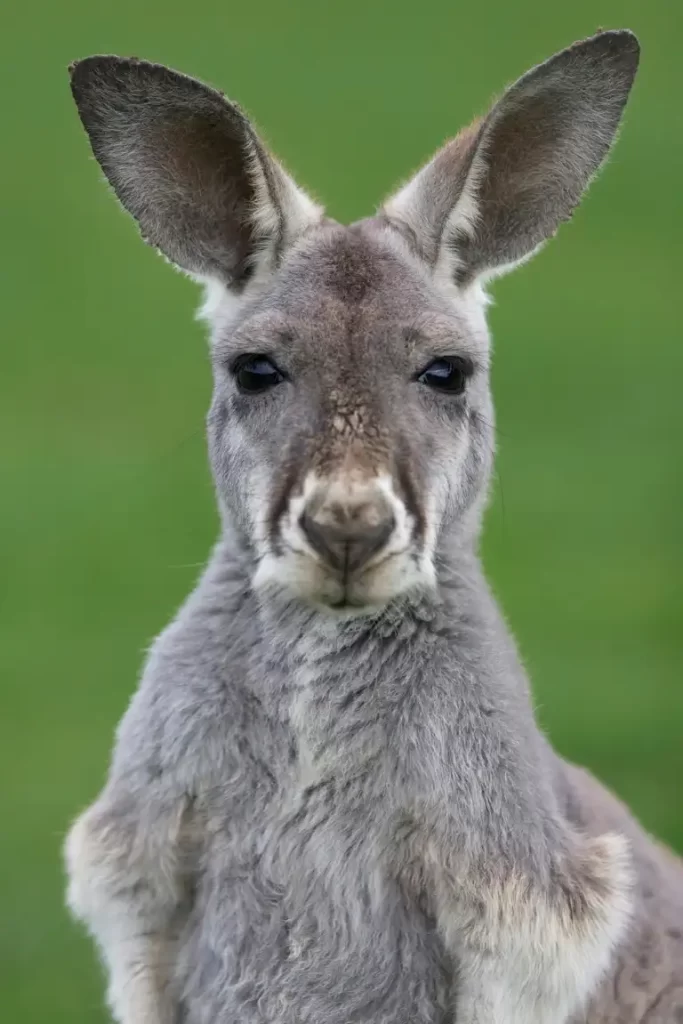
Kangaroos are often portrayed in popular media as aggressive and dangerous animals that pose a threat to humans and pets. However, this is largely a misconception, and the reality of kangaroo behavior is much more nuanced. In this article, we will explore some common myths about kangaroo behavior towards humans and dogs, and provide evidence-based insights into their true nature.
Myth 1: Kangaroos are naturally aggressive towards humans and pets.
Contrary to popular belief, kangaroos are generally peaceful and non-aggressive towards humans and pets. In fact, most kangaroo attacks on humans occur when people try to feed or approach them too closely. This behavior can be attributed to the fact that kangaroos have a natural fear of humans, which makes them wary of any potential threats.
Myth 2: Kangaroos attack humans for food or as prey.
Kangaroos are herbivores and do not attack humans for food or as prey. They primarily feed on grasses, leaves, flowers, and other vegetation found in their natural habitat. While it is true that kangaroos have been known to kick with their powerful hind legs when threatened or cornered by dogs or other animals, these attacks are typically defensive in nature rather than predatory.
Myth 3: All wild dogs pose a threat to kangaroos.
While it is true that some wild dogs (such as dingoes) may pose a threat to kangaroos by hunting them for food, not all wild dogs behave aggressively towards them. In fact, many domesticated dogs can coexist peacefully with kangaroos if properly trained and supervised by their owners.
Fact 1: Kangaroos may become aggressive if they feel threatened or cornered by dogs or other animals.
While it is uncommon for kangaroos to attack humans unprovoked, they may become aggressive if they feel threatened or cornered by dogs or other animals. This behavior is typically a defensive response to perceived danger, and can be avoided by keeping pets on leashes and maintaining a safe distance from kangaroos in the wild.
Fact 2: Kangaroos have a natural fear of humans and will usually avoid contact if possible.
Despite their reputation for being aggressive, kangaroos actually have a natural fear of humans and will usually avoid contact if possible. This means that encounters between humans and kangaroos are relatively rare, and most people will never experience an attack or aggressive behavior from these animals.
Addressing Common Misconceptions About Kangaroo Danger
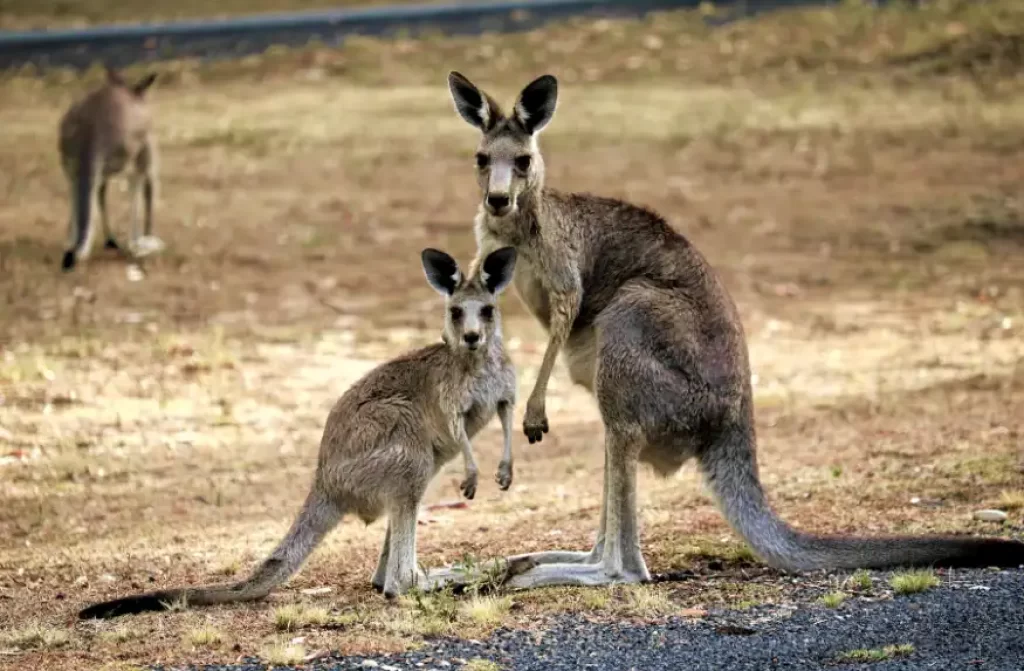
Kangaroos are fascinating animals that are native to Australia. They are known for their unique hopping gait and powerful hind legs, which allow them to jump up to 30 feet in a single bound. However, there is a common misconception that kangaroos are dangerous animals that pose a threat to humans. In this article, we will address this misconception and provide some facts about kangaroo danger.
Kangaroos Are Not Typically Considered a Danger or Threat to Humans
Contrary to popular belief, kangaroos are not typically considered a danger or threat to humans. In fact, they are generally quite shy and will avoid human contact whenever possible. While it is true that kangaroos can be aggressive towards other animals, such as dogs or other kangaroos during mating season, they do not usually pose a threat to humans.
Injuries Caused by Kangaroos Are Rare Cases and Usually Occur When Humans Provoke or Approach Them Too Closely
While injuries caused by kangaroos do occur from time to time, these cases are rare and usually happen when humans provoke or approach them too closely. Kangaroos have been known to attack humans who get too close or try to feed them, but these incidents are few and far between.
In most cases where people have been injured by kangaroos, it has been because the person was trying to take a selfie with the animal or getting too close while attempting to interact with it in some way. This behavior can be dangerous because it can make the animal feel threatened and cause it to react defensively.
While Kangaroos Can Cause Damage To Property, They Are Not Classified as Dangerous Animals and Do Not Pose A Significant Risk To Many People
It is true that kangaroos can cause damage to property such as crops or gardens if they wander onto private land. However, this does not mean that they are classified as dangerous animals. In fact, kangaroos are protected under Australian law and it is illegal to harm or kill them without a permit.
While there have been cases where kangaroos have caused accidents on roads by jumping in front of cars, these incidents are also relatively rare. It is important to remember that kangaroos are wild animals and should be treated with respect and caution.
Practical Advice for Staying Safe Around Kangaroos in the Wild
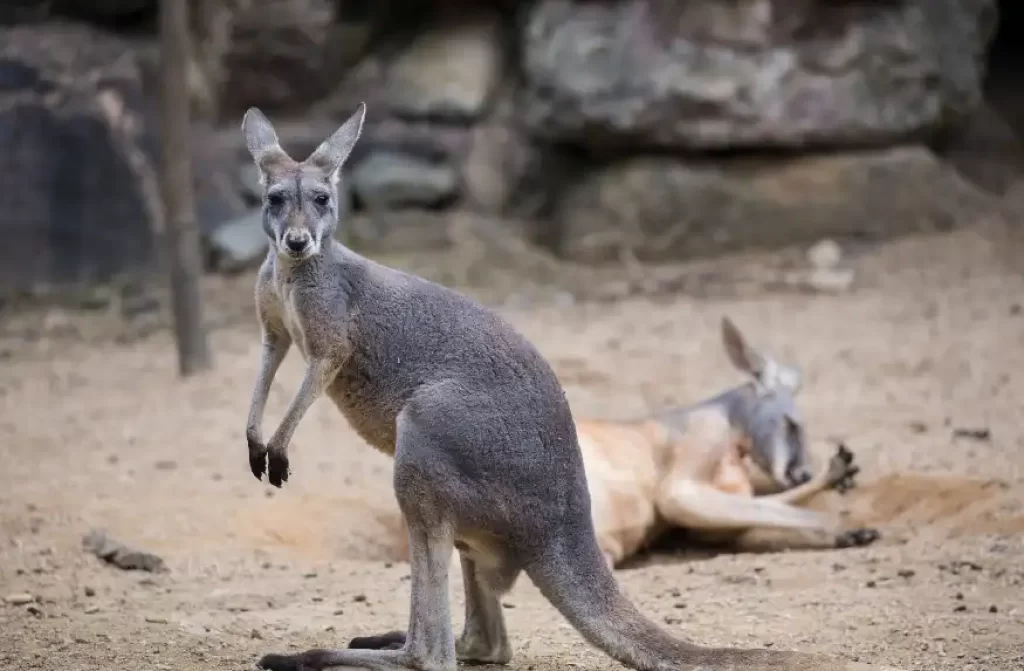
Kangaroos are fascinating creatures that are often associated with Australia. They are known for their powerful hind legs, long tails, and pouches where they carry their young ones. However, many people wonder if kangaroos are dangerous and how to stay safe around them when encountering them in the wild.
How Dangerous Are Kangaroos?
Kangaroos can be dangerous animals, especially if they feel threatened or cornered. Male kangaroos (also called boomers) can grow up to 6 feet tall and weigh over 200 pounds. They have sharp claws that they use to defend themselves against predators or other males during mating season.
Female kangaroos (also called flyers) can also be aggressive when protecting their joeys. If a human or animal gets too close to a female kangaroo, she may perceive it as a threat and attack with her strong hind legs.
Wallabies, which are smaller than kangaroos, can also be aggressive if they feel threatened. It is essential to keep a safe distance from both kangaroos and wallabies when encountering them in the wild.
Tips for Staying Safe Around Kangaroos
To avoid accidents with kangaroos and stay safe around them, follow these practical tips:
- Keep a Safe Distance: When you encounter wild kangaroos or wallabies, maintain a respectful distance of at least 30 meters (100 feet). This distance will allow you to observe these animals without disturbing them.
- Avoid Close Contact: Do not attempt to touch or feed wild kangaroos or wallabies as this may provoke aggression. Also, do not try to take selfies with these animals as it may put you at risk of injury.
- Be Aware of Your Surroundings: If you see many kangaroos in an area, it is best to avoid walking or running through them. Kangaroos may perceive humans as prey and attack if they feel threatened.
- Stay Behind a Fence or in a Vehicle: If you encounter a kangaroo in the wild, stay behind a fence or get into your vehicle. This action will provide you with protection if the kangaroo becomes aggressive.
- Seek Medical Attention: If you are injured by a kangaroo, seek medical attention immediately. Kangaroos have sharp claws that can cause deep wounds and infections.
- Be Cautious on the Road: When driving on roads that pass through areas where kangaroos live, be cautious and drive slowly to avoid collisions.
How to Defend Yourself Against a Kangaroo
If you feel threatened by a kangaroo, follow these steps to defend yourself:
- Stand Your Ground: Do not run away from the kangaroo as it may chase after you. Instead, stand your ground and face the animal.
- Make Yourself Look Bigger: Raise your arms above your head to make yourself look bigger than you are.
- Make Loud Noises: Clap your hands or shout loudly to scare off the kangaroo.
- Use Pepper Spray: If all else fails, use pepper spray to deter the animal from attacking you.
You might also like
- What do Kangaroos Look like When They are Born?
- Human vs Kangaroo: Who Wins the Ultimate Fight?
- How Many Kangaroos are there in Australia?
- What do Kangaroos Eat in the Desert?
- Can Kangaroos Move Their Legs Independently?
- Kangaroos Can’t Walk Backwards: Myth or Fact?
Protected Wildlife Offences and Penalties: Can You Pet a Kangaroo in the Wild?
It is important to understand that kangaroos are protected wildlife in Australia, and there are strict laws regarding their treatment. In fact, it is illegal to pet or interact with kangaroos in the wild without proper permits.
As discussed in previous sections, kangaroos have a complex social structure and communication system, which can be disrupted by human interaction. While they may not actively seek out humans to attack them, their powerful kicks can cause serious injury or even death.
To stay safe around kangaroos in the wild, it is crucial to respect their space and avoid approaching them. It is also important to remember that feeding or touching them can lead to hefty fines and even imprisonment.
In conclusion, while kangaroos may not be inherently dangerous towards humans, they should still be treated with caution and respect as protected wildlife. As visitors or locals exploring Australia’s natural habitats, we must do our part in preserving these unique creatures for generations to come by following the rules and regulations set forth by authorities.






